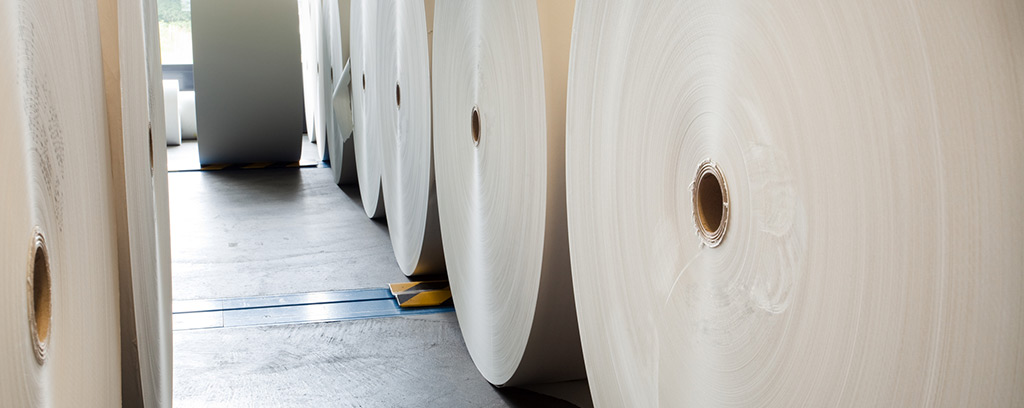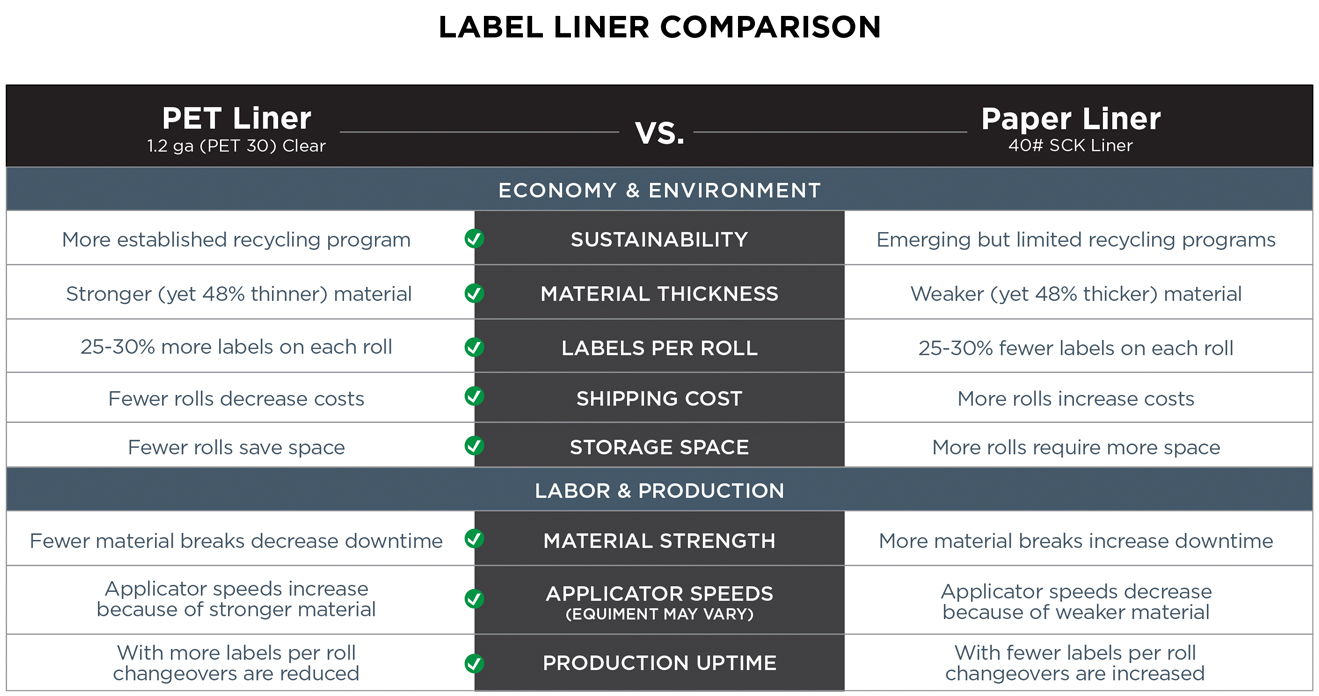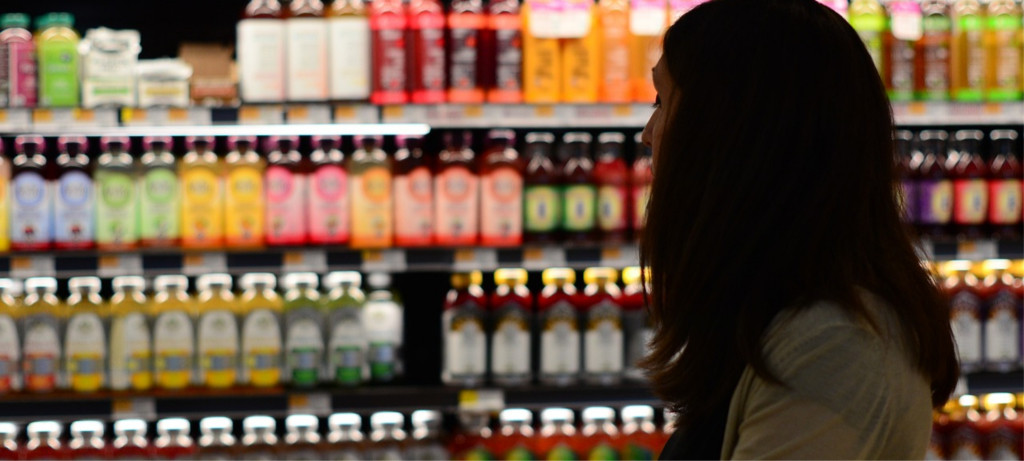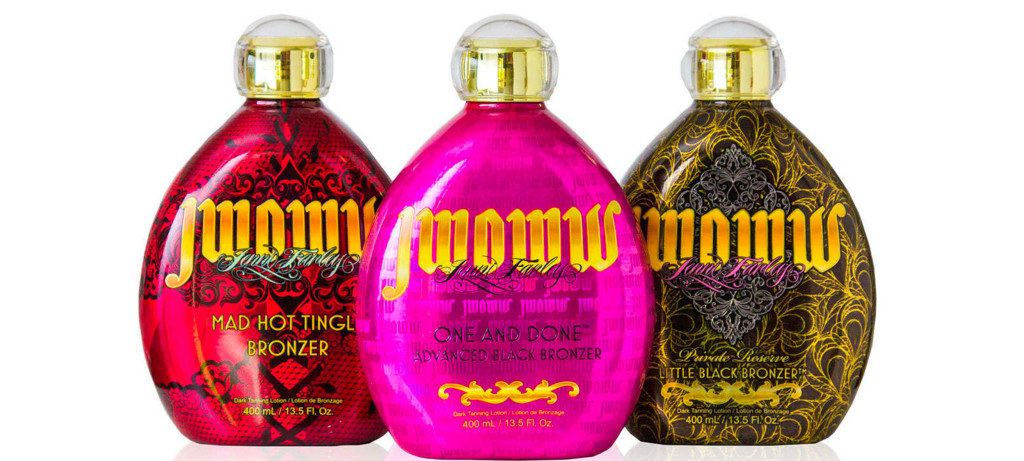Protect yourself against paper liner shortage problems with PET

We’ve all felt the pain of supply chain disruption, even within the label and packaging industry. Unfortunately, paper is the latest casualty in an already tight market.
Lead times on paper are ballooning. This is partly due to constraints on global mills and an ongoing strike at a major supplier. And these events impact a part of your label that’s easy to forget: the release liner.
Since release liners don’t end up on your products, they often get overlooked. Even though they don’t adhere to your product, they play a pivotal role in label application. And if you’re a longtime user of paper liners, it’s important for you to understand how current events affect your paper supply.
Right now, paper liner lead times stretch through mid-2022– with no guarantees against further delays. The shortage is unavoidable, and companies that depend on this product can’t afford inaction without risking label inventory, long supply lead times and potential stockouts.
The good news? You’ve got options, and we’re here to help.
Switching from paper liners to polyethylene terephthalate (PET) liners can secure your long-term label supply chain. Compared to paper liners, PET’s current lead time is just a few weeks. PET liners have already been in use for years and offer benefits like increased productivity, long-term cost efficiency and enhancement of sustainability initiatives.
Given the current situation, now may be the best time to consider a change. Below we have outlined the top benefits of PET release liners and how to adopt a change without disrupting your business.
PET’s 3 big benefits: productivity, efficiency and sustainability
When it comes to durability, PET is a clear winner. Its polyester construction is highly durable and can withstand more stress, moisture and heat than paper. In most cases, Resource Label Group uses 1.2-gauge liner– and unlike thinner PET or paper liners, it is less likely to tear, nick or burst under increased tension in high-speed applications. This promotes higher throughput and performance by eliminating unnecessary downtime on bottling and production lines due to web breaks.
In layman’s terms? Depending on your equipment, your operation may be able to run PET up to twice as fast as paper release liners. That means your facility’s overall efficiency goes up. And unlike paper liners, PET liners promote a dust-free environment-highly incumbent in GMPapproved labs for dietary supplements, cosmetics, pharma, and food or beverage products.
Because PET is thinner than most paper liner, you can expect to fit 25-30% more labels on each roll depending on which liner you choose. This results in fewer roll changes and longer, more efficient application runs.
Depending on the size and scale of your operation, PET may be an easy way to support sustainability initiatives your organization may already be considering. With the right partner, PET liners are fully recyclable; because of its density, it’s more durable and easier to recover, and industry partnerships to support PET liner recycling are increasing. Plus, when it’s time to reorder, many lines of PET are made of 30% recycled materials.

How to make your shift from paper to PET painless
Converting from paper to PET doesn’t have to be difficult. As your partner, we can help you plan, evaluate your facility’s readiness, organize your label logistics and ultimately ease the transition.
PET liners do require your label supplier to purchase a new die due to the thinner material in PET. The tolerances and depth of the die must be adjusted to ensure a clean and accurate cut. Ordering new dies is an everyday practice across each of our locations and can be achieved in a matter of days and is cost effective.
In addition, label applicators may require different tensions and sensor settings to run PET, so these must be adjusted according to your manufacturer’s guidelines. When it comes to sensors, you probably won’t need to replace them – unless you’re applying a clear label. If that’s the case, you should consult your manufacturer for help installing ultrasonic sensors.
Partner with a label provider you can trust with this crisis
With wide application ranges, adhesives options and facestock compatibilities, PET is an ideal alternative for future-proofing your labels. Aside from potentially requiring a new die, it requires no other changes for your label regarding graphics or enhanced design elements like stamping, embossing and foiling.
Whether you’re a new or existing customer, Resource Label Group is ready to help you navigate the shift from paper to PET liner. Our expert team will collaborate with you to examine your current processes and develop a clear action plan for ensuring your success.
This includes:
- A one-on-one consultation to evaluate your current supply and necessary next steps
- Guidance regarding your existing applicator set-up
Resource Label Group has already mobilized a response to the global paper shortage, including securing PET liners from key suppliers.
Start the conversation today to ensure your label supply.
Tags:


